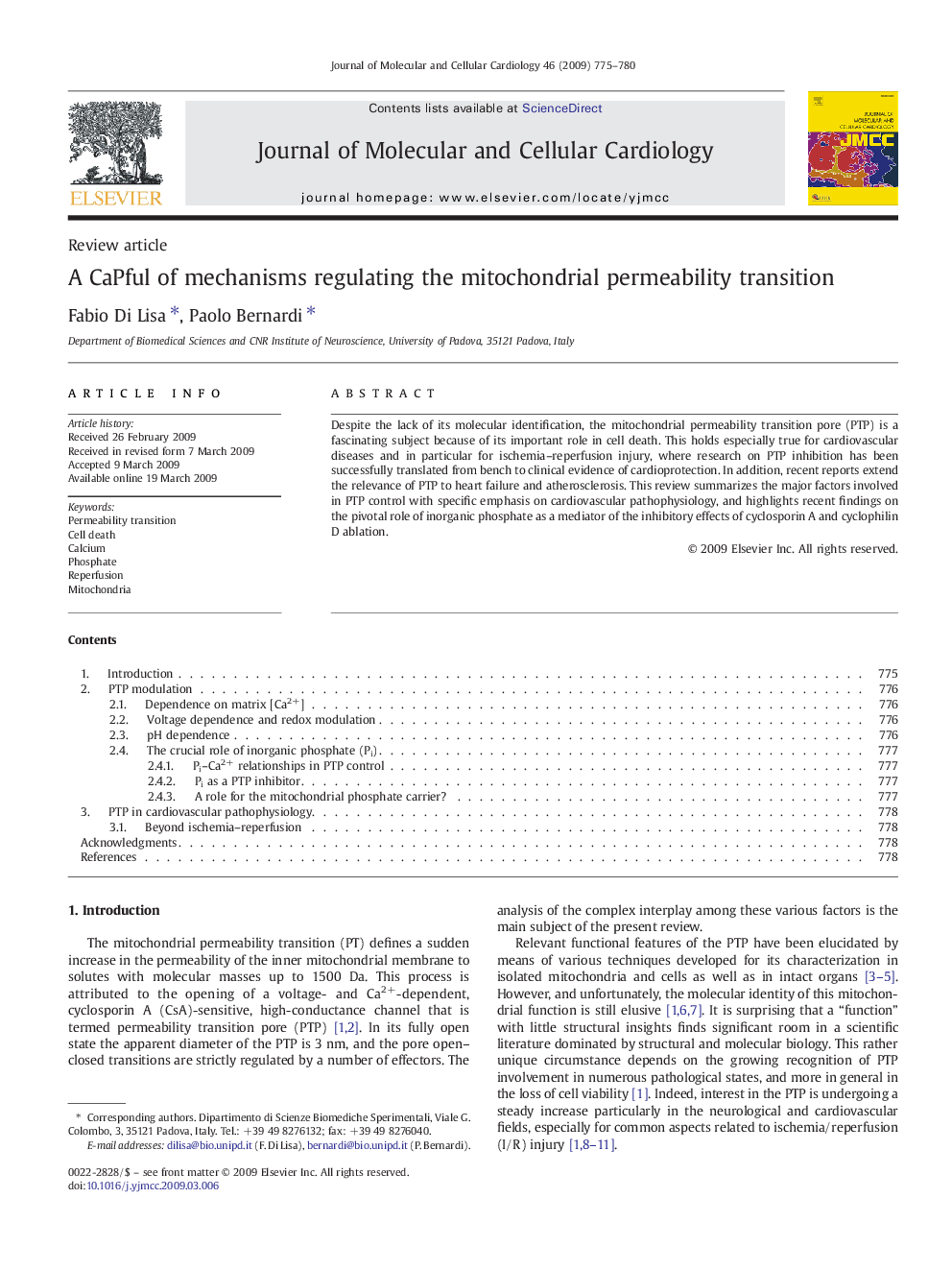| Article ID | Journal | Published Year | Pages | File Type |
|---|---|---|---|---|
| 2191104 | Journal of Molecular and Cellular Cardiology | 2009 | 6 Pages |
Despite the lack of its molecular identification, the mitochondrial permeability transition pore (PTP) is a fascinating subject because of its important role in cell death. This holds especially true for cardiovascular diseases and in particular for ischemia–reperfusion injury, where research on PTP inhibition has been successfully translated from bench to clinical evidence of cardioprotection. In addition, recent reports extend the relevance of PTP to heart failure and atherosclerosis. This review summarizes the major factors involved in PTP control with specific emphasis on cardiovascular pathophysiology, and highlights recent findings on the pivotal role of inorganic phosphate as a mediator of the inhibitory effects of cyclosporin A and cyclophilin D ablation.
